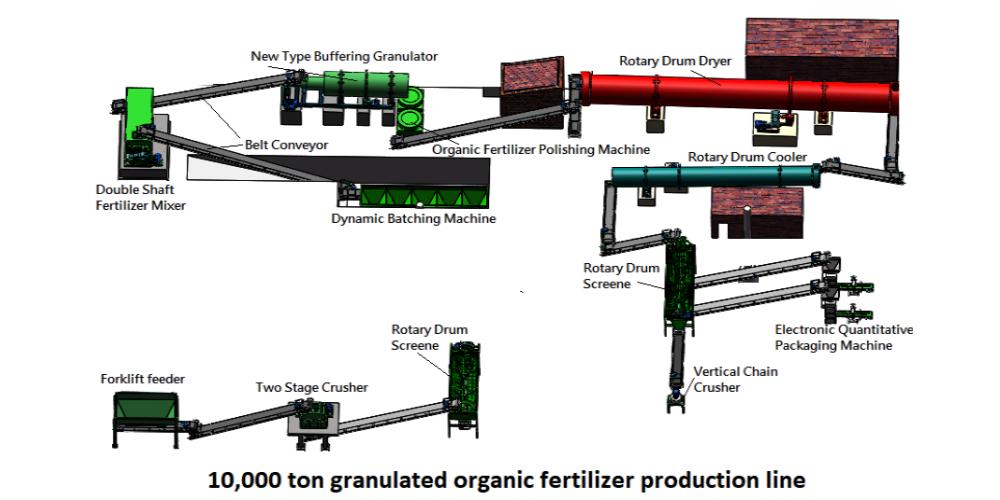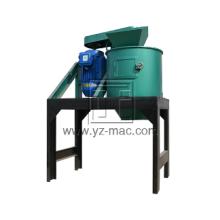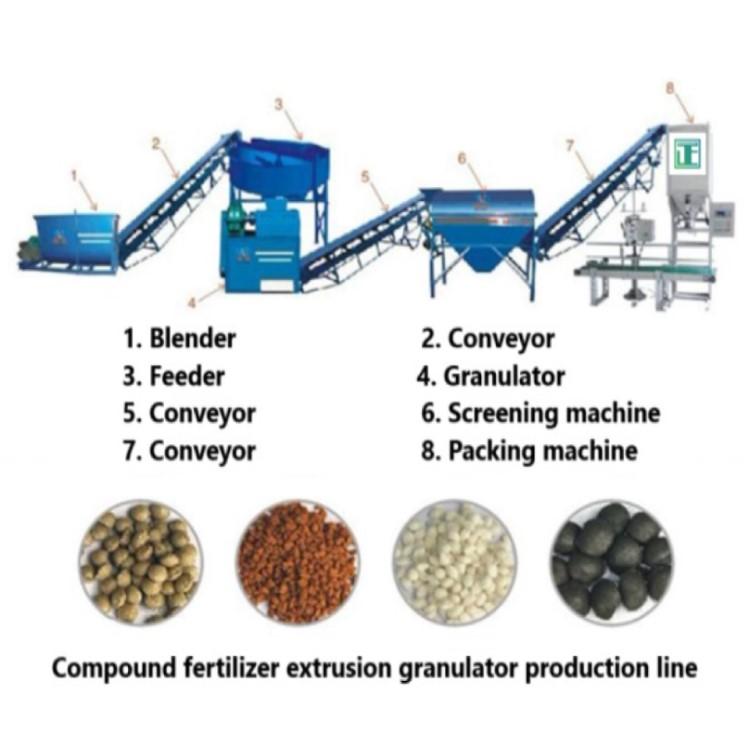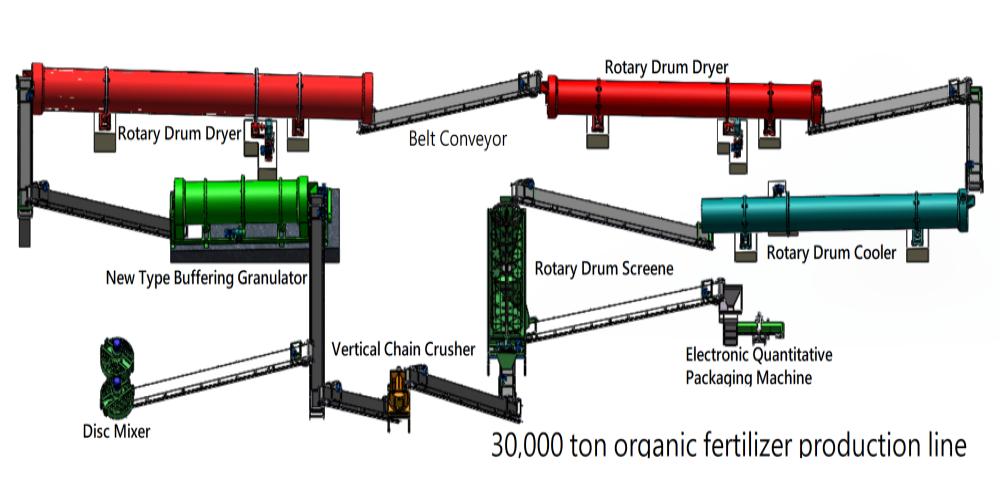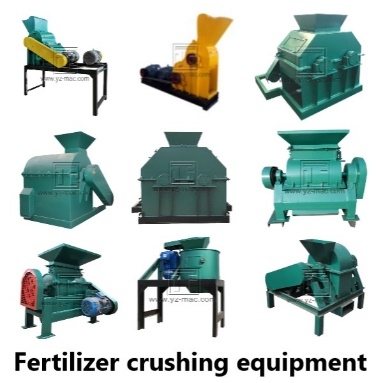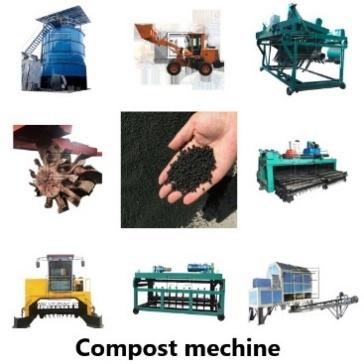Earthworm manure organic fertilizer production line
An earthworm manure organic fertilizer production line typically involves the following processes:
1.Raw Material Handling: The first step is to collect and handle the earthworm manure from vermicomposting farms. The manure is then transported to the production facility and sorted to remove any large debris or impurities.
2.Fermentation: The earthworm manure is then processed through a fermentation process. This involves creating an environment that is conducive to the growth of microorganisms that break down the organic matter in the manure. The result is a nutrient-rich compost that is high in organic matter.
3.Crushing and Screening: The compost is then crushed and screened to ensure that it is uniform and to remove any unwanted materials.
4.Mixing: The crushed compost is then mixed with other organic materials, such as bone meal, blood meal, and other organic fertilizers, to create a balanced nutrient-rich blend.
5.Granulation: The mixture is then granulated using a granulation machine to form granules that are easy to handle and apply.
6.Drying: The newly formed granules are then dried to remove any moisture that may have been introduced during the granulation process.
7.Cooling: The dried granules are cooled to ensure that they are at a stable temperature before they are packaged.
8.Packaging: The final step is to package the granules into bags or other containers, ready for distribution and sale.
It is important to note that earthworm manure is an excellent source of nutrients and microorganisms for plant growth. The vermicomposting process also helps to convert organic waste into a valuable resource. To ensure that the final product is of high quality, it is important to implement appropriate sanitation and quality control measures throughout the production process.
Overall, an earthworm manure organic fertilizer production line can help reduce waste, promote sustainable agriculture practices and provide a high-quality and effective organic fertilizer for crops.


